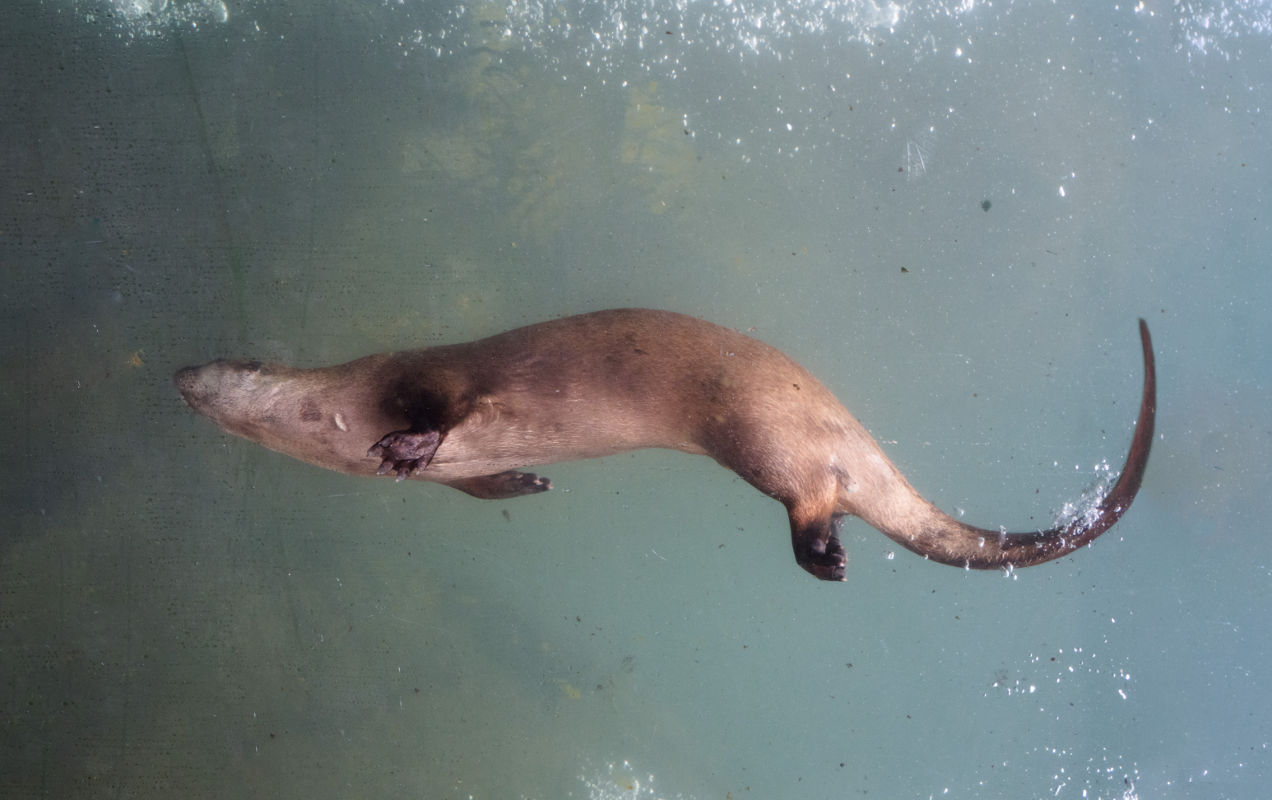
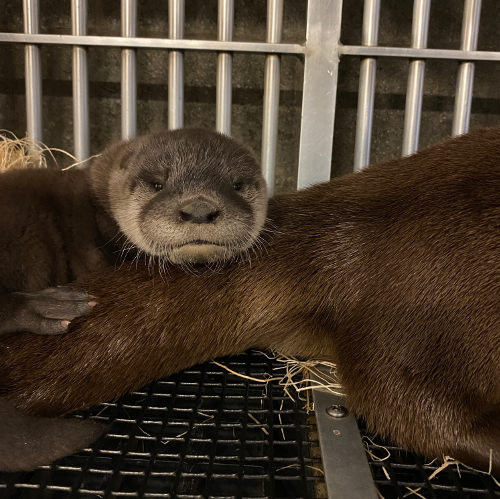
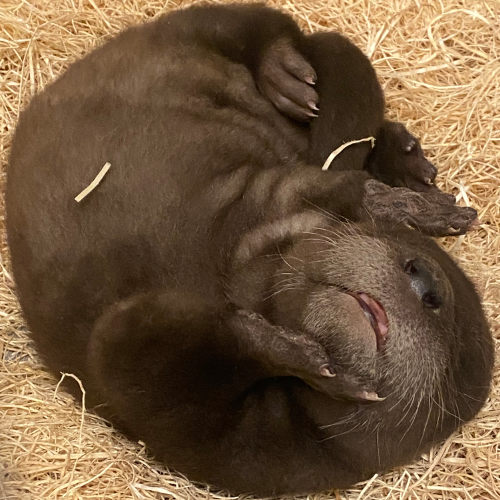
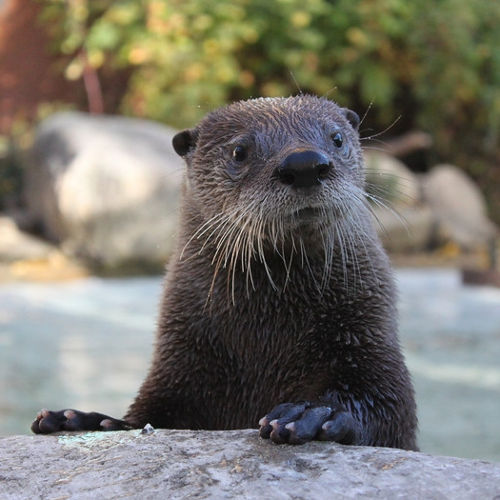
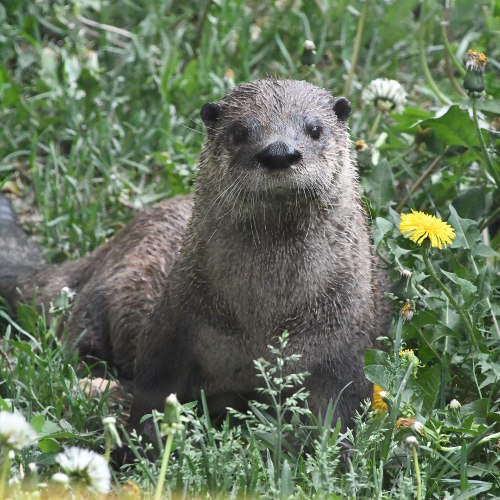
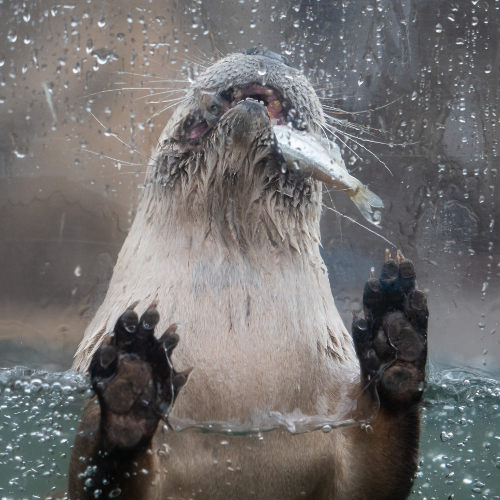
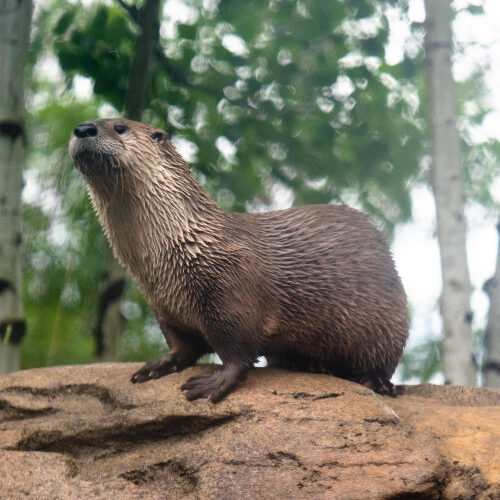




The North American river otter is part of the weasel family. It is a semi-aquatic species that is equally at home in the water and on land. They live in burrows near water and can thrive in almost any body of water.
River otters are well adapted to their water environment as they have webbed feet to propel them, a tail to steer, whiskers to hunt in murky water, nostrils and ears that seal shut in the water, and a third eyelid to protect their eyes while swimming. They have a beautiful, thick, water repellent fur coat to keep them warm. A North American river otter can hold its breath underwater for up to eight minutes.
In the early 1900s, the river otter was reduced to 75% of its range. However, they are a true conservation success story as they are now listed as “least concern” because of improvements to water quality and further conservation efforts.
The Edmonton Valley Zoo is home to five North American river otters: Steve, Missi, Bow, Najoua, and baby Taj, who was born in March 2022.
CLICK THROUGH THE TABS BELOW TO LEARN MORE!
A river otter is generally between 0.9-1.2 m (2-3 feet) long including its tail and weighs between 5-14 kg (11 and 30 lbs). The tail makes up about a third of their total length. Males are usually larger than females.
The North American river otter is a semi-aquatic species found in much of Canada and the United States.
River otters are carnivores and are the scavengers of the otter family. They will eat a variety of aquatic wildlife, including fish, crabs, frogs, birds, and anything easy for them to get.
They only want to do three things: Eat, Play, and Sleep! They communicate with each other through sound (whistles, yelps, growls), touch, body posture, and scent markings.
Typically, a North American river otter will breed once a year and have, on average, three offspring. Males don’t help raise the pups. Around two months of age, a pup will be pushed into the water by mom in an advanced swimming lesson!
Around 10 years in the wild; can live up to 20 years in human care.
Because of the speed, semi-aquatic life, and strong nature of the North American river otter, they don’t have many animal predators. However, major threats for these otters are humans, habitat loss, oil spills, and hunters looking for their fur. Otters are extremely sensitive to environmental pollution.


